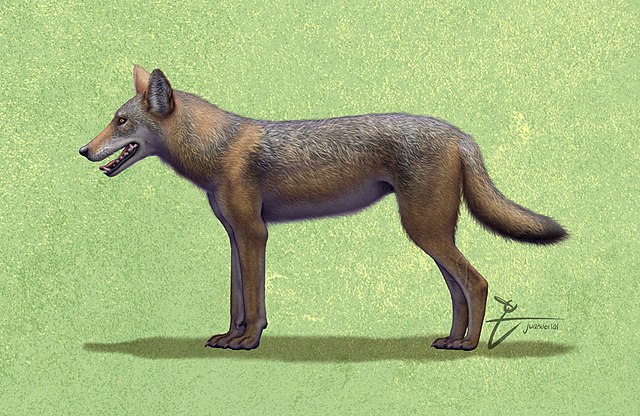The evolution of the wolf occurred over a geologic time scale of at least 300 thousand years.
The grey wolf Canis lupus is a highly adaptable species that is able to exist in a range of environments and which possesses a wide distribution across the Holarctic. Studies of modern grey wolves have identified distinct sub-populations that live in close proximity to each other. This variation in sub-populations is closely linked to differences in habitat – precipitation, temperature, vegetation, and prey specialization – which affect cranio-dental plasticity.
Canis etruscus skull in the Montevarchi Paleontological Museum
Diagram of a wolf skull with key features labelled
Life restoration of C. mosbachensis
European wolf skull – sketch
The Caninae, known as canines, are one of three subfamilies found within the canid family. The other two canid subfamilies are the extinct Borophaginae and Hesperocyoninae. The Caninae includes all living canids and their most recent fossil relatives. Their fossils were first found in North America and dated to the Oligocene era, then spreading to Asia at the end of the Miocene era, some 7 million to 8 million years ago.
Caninae
Image: Wolf on alert
Image: Dhole (Asiatic wild dog) cropped
Image: African wild dog (Lycaon pictus pictus)








